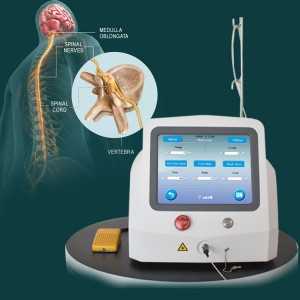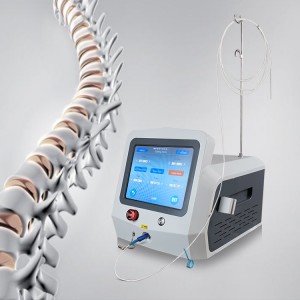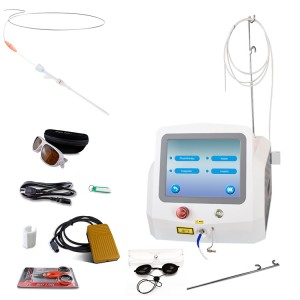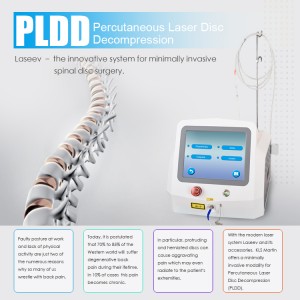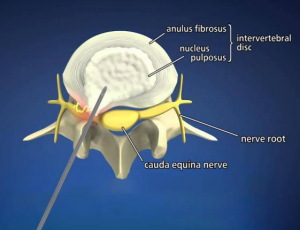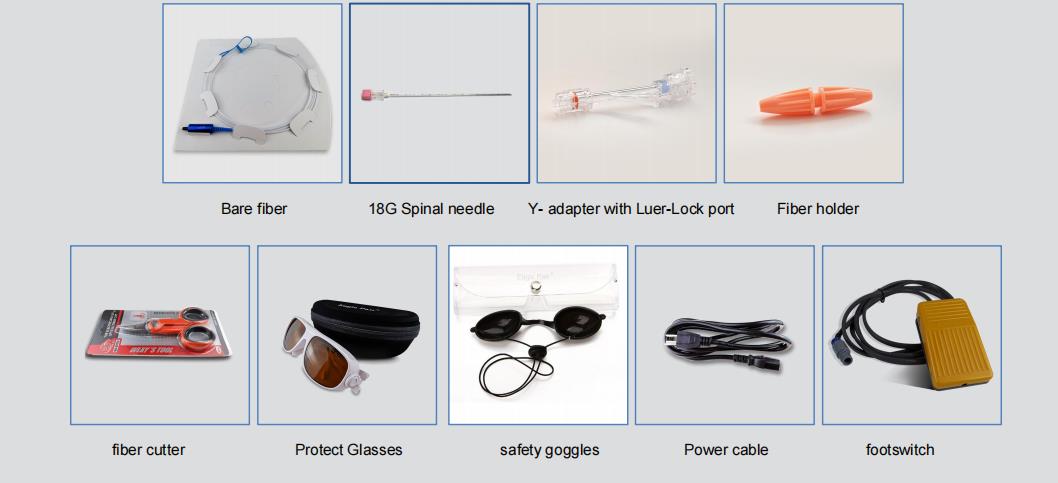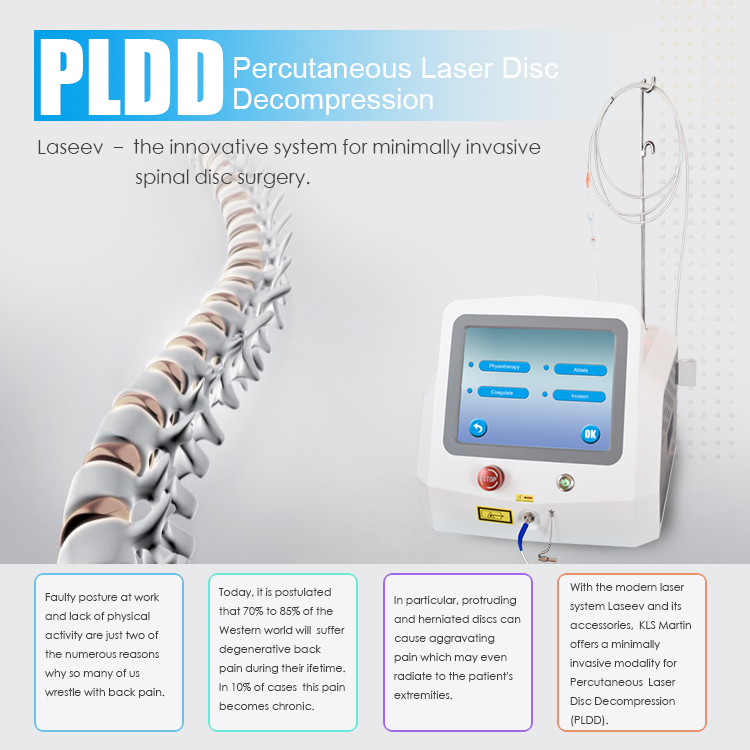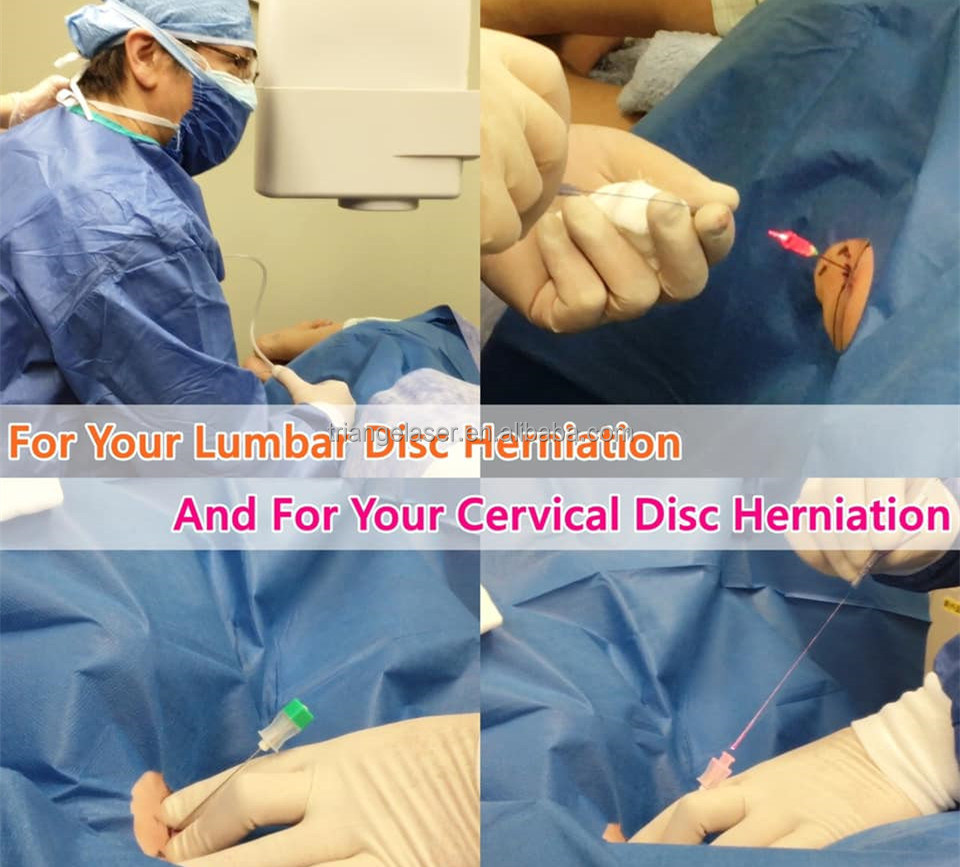Hot Selling 1470 pldd laser 1470nm laser for pldd- 980+1470 PLDD
Percutaneous laser disc decompression (PLDD) is a procedure in which herniated intervertebral discs are treated by reduction of intradiscal pressure through laser energy. This is introduced by a needle inserted into the nucleus pulposus under local anesthesia and flfluoroscopic monitoring. The small volume of nucleus vaporized results in a sharp fall of intradiscal pressure, with consequent migration of the herniation away from the nerve root. It is fifirstly developed by Dr. Daniel S.J. Choy in 1986.
PLDD has proven to be safe and effective. It is minimally invasive, is performed in an outpatient setting, requires no general anesthesia, results in no scarring or spinal instability, reduces rehabilitation time, is repeatable, and does not preclude open surgery should that become necessary. It is an ideal choice for patients with poor results in non-surgical treatment.
A needle is inserted into the affected area of the ntervertebral disc and laser fifiber is injected through it to burn the nucleus pulposus with a laser.
The LASEEV® DUAL platform is based on the absorption characteristics of both 980 nm and 1470 nm wavelengths, which, thanks to its outstanding interaction in water and haemoglobin and moderate penetration depth into disc tissue, enables procedures to be carried out safely and ac curately, especially in proximity of delicate anatomical structures. Microsurgical precision is guaranteed by the technical characteristics of the special PLDD What's the PLDD? Percutaneous laser disc decompression (PLDD) is a procedure in which herniated intervertebral discs are treated by reduction of intradiscal pressure through laser energy. This is introduced by a needle inserted into the nucleus pulposus under local anesthesia and fluoroscopic monitoring. The small volume of nucleus vaporized results in a sharp fall of intradiscal pressure, with consequent migration of the herniation away from the nerve root. It is firstly developed by Dr. Daniel S.J. Choy in 1986. PLDD has proven to be safe and effective. It is minimally invasive, is performed in an outpatient setting, requires no general anesthesia, results in no scarring or spinal instability, reduces rehabilitation time, is repeatable, and does not preclude open surgery should that become necessary. It is an ideal choice for patients with poor results in non-surgical treatment. A needle is inserted into the affected area of the ntervertebral disc and laser fiber is injected through it to burn the nucleus pulposus with a laser. Tissue interaction with LASEEV® DUAL laser fibers, which allow for surgical effectiveness, ease of handling, and maximum safety. The use of flexible tactile laser fibers with core diameters of 360 micron in combination with the microsurgical PLDD enables a very precise and accurate access and intervention to sensitive areas like the cervical and lumbar disc zones on the basis of clinical therapeutic needs. PLDD laser treatments are mostly used after non-successful conventional therapeutic options under strict MRT/ CT control.
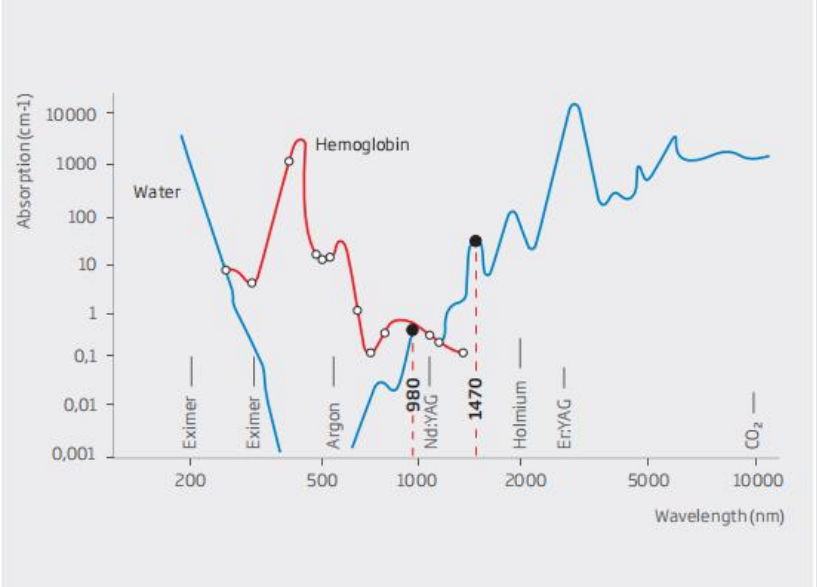
— Intra-discal application on cervical spine, thoracic spine, lumbar spine
— Medial branch neurotomy for facet joints
— Lateral branch neurotomy for sacroiliac joints
— Contained disc herniations with consecutive foraminal stenosis
— Discogenic spinal stenosis
— Discogenic pain syndroms
— Chronic facet and sacroiliac joint syndrom
— Further surgical applications, e.g. tennis elbow, calcaneal spur
— Local anaesthesia allows the treatment of patients at risk.
— Very short operating time compared with open procedures
— Low rate of complications and postoperative inflammation(No soft tissue injury,No risk of
epidural fibrosis or scarring)
— Fine-needle with very small puncture site and therefore no need for sutures
— Immediate significant pain relief and mobilization
— Shortened hospital stay and rehabilitation
— Lower costs
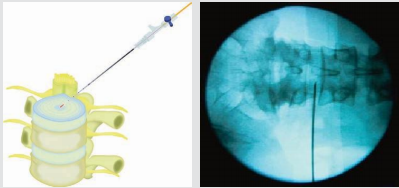
PLDD procedure is performed using local anesthesia. Optical fiber is inserted in special cannula under fluoroscopic guidance.After applying contrast to the facet it is possible to check cannula's position and the condition of the disc bulge. Starting laser initiates decompression and lowers intradiscal pressure.
The procedure is done from the posterior-lateral approach with no interference to vertebral canal,therefore,there is no possibility of damaging a reparative treatment,but there is no possibility to reinforce annulus fibrosus.DUring PLDD disc volume is minimally decreased,however,disc pressure can be significantly lowered. In case of using laser to disc decomperssion,small amount of nucleus pulposus evaporates.

| Laser type | Diode Laser Gallium-Aluminum-Arsenide GaAlAs |
| Wavelength | 650nm+980nm+1470nm |
| Power | 30W+17W/60W+17W |
| Working Modes | CW, Pulse and Single |
| Aiming Beam | Adjustable Red indicator light 650nm |
| Fiber type | Bare fiber |
| Fiber diameter | 400/600 um fiber |
| Fiber connector | SMA905 international standard |
| Pulse | 0.00s-1.00s |
| Delay | 0.00s-1.00s |
| Voltage | 100-240V, 50/60HZ |
| Size | 34.5*39*34cm |
| Weight | 8.45KG |


